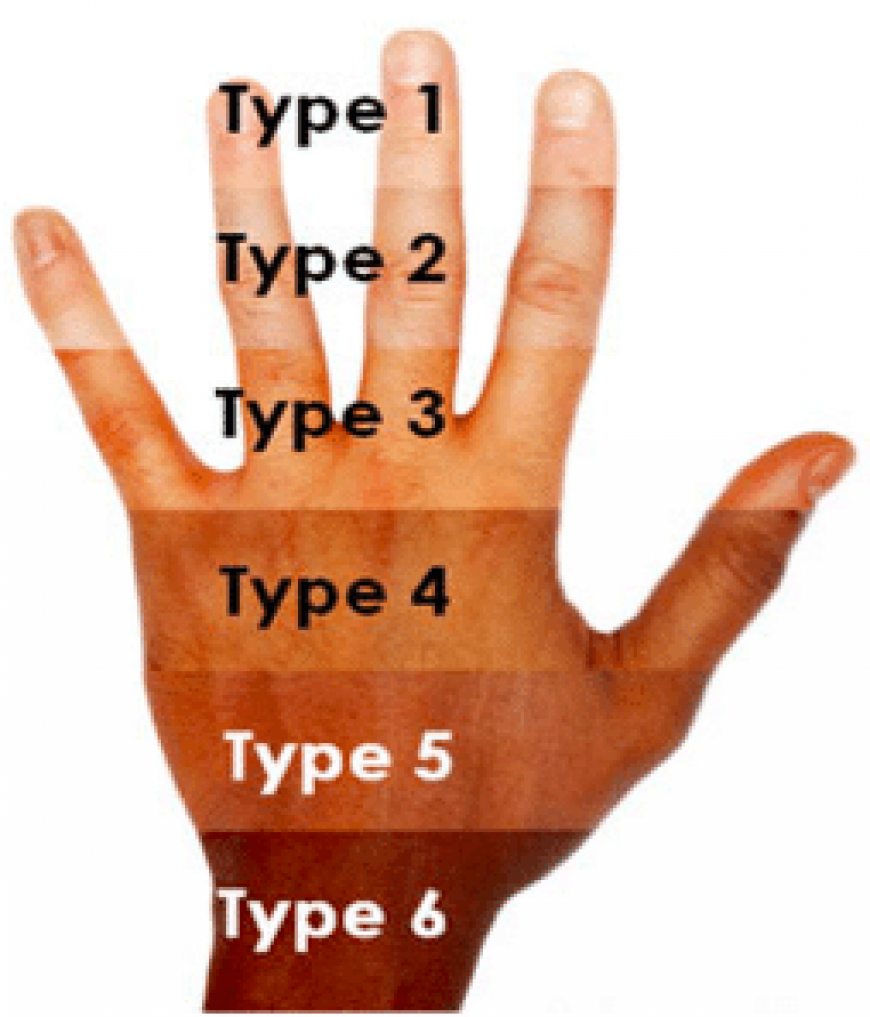What’s your Fitzpatrick skin type in Fitzpatrick scale?
Fitzpatrick skin typing test or the Fitzpatrick scale is a way of classifying different types of skin. It classifies a person’s complexion in relation to their tolerance to sunlight. The sun’s UV rays can damage a person’s skin and may lead to signs of pre-mature aging and skin cancer.
In today’s times it is used by many health professions to determine how likely a person is to get skin cancer.
This article has the Fitzpatrick skin typing system and it also discusses how to protect each of the six different Fitzpatrick skin types from sun damage.
Where do you fit on the Fitzpatrick skin types?
The Fitzpatrick skin types are associated with skin, hair, and eye colors in respect to their toleration of the sun:
Skin Type Typical Features Characteristics/Tanning ability
I pale white skin | red/blond hair | blue/green eyes | freckles always burns, never tans
II white or fair skin | red or blond hair | blue/hazel/green eyes usually burns, tans rarely
III cream white or fair skin | any eye or hair color gradually tans, burn occasionaly
IV light brown skin tans with ease, rarely burns
V brown skin tans very easily, rarely burns
VI deeply pigmented dark brown or black skin tans very easily, never burns
Risk associated with your skin & how to protect each skin type
If a person is able to understand which Fitzpatrick skin type they have, they can make an informed choice about how to protect their skin.
1. Fitzpatrick Skin Types 1 And 2
Risk of developing:
• Skin aging
• Skin cancer such as melanoma
• Sun damage
To protect your skin,
• Always wear protective clothing and use a wide-brimmed hat and sunglasses (with UV block).
• Avoid excessive sun exposure
• Always use sunscreen with SPF 30 or above.
• Walk or sit in the shade if possible
• Do an all-over body check to locate any abnormalities in your skin.
2. Fitzpatrick Skin Types 3 To 6
Risk of developing:
• Skin cancer such as melanoma
• Photoaging
• Sun damage
To protect your skin,
• Avoid excessive sun exposure.
• Use protective clothing and wear wide-brimmed hats whenever for extended periods
• Use a sunscreen with SPF 15 and above.
• Keep an eye on your skin for any changes.
When to see a doctor
Things to talk to a doctor about include:
• moles that bleeds
• existing moles that are getting bigger
• moles that are itchy or tingly
• new moles
• the outline of a mole becoming blotched
• a spot becoming raised or developing a lump in the middle
• a spot changing color from brown to black
• spots that look unlike any other spots
• the surface of a spot changing texture and becoming rough or ulcerated
Takeaway
Fitzpatrick skin types are a useful way of defining skin type in order to understand the best possible ways to protect skin from the sun. One should avoid sun damage as it helps to reduce the risk of skin cancer.
While sunlight definitely has its share of positive health benefits (such as allowing the body to produce Vitamin D), excessive exposure can often do more harm than good.
No matter what your race or ethnicity, it is always important to check for any early signs of skin cancer on a monthly basis, regardless of skin type.
If you find any worrisome spot mole, blemish, sore, or other skin concerning change, don’t hesitate to contact your doctor immediately.

